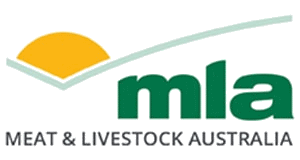Towards Optimal Out-of-Season Feed Supply
| Project start date: | 01 October 2024 |
| Project end date: | 30 October 2027 |
| Project status: | In progress |
| Livestock species: | Grass-fed Cattle, Sheep, Lamb |
| Relevant regions: | Western Australia, Mediterranean |
| Site location: | Great Southern Region WA |
Summary
Mediterranean environments such as the Great Southern Region of Western Australia are characterised by hot, dry summers and cool, wet winters. This climate leads to a mismatch between on-farm feed supply and feed demand, and filling the summer/autumn feed gap is challenging and usually expensive. Farmers have a range of options available to them; they can reduce stock numbers forgoing potential profit, feed supplements that quickly become expensive, let stock lose weight, which can result in adverse animal production and forgone profit or establish out-of-season feed.
The aim of this producer demonstration site is to demonstrate the optimal economic use of salt land pasture and standing fodder crops as out-of-season feed within the whole farm system and enhance adoption through the application of the Farm Optimiser Platform.
Objectives
By September 2026, in the Great Southern region of Western Australia:
- Using four sites, demonstrate the use of fodder and salt land pasture (SLP demonstration sites will be established prior to the project) to fill the summer feed gap, through an annual field day.
- For core producers that are already implementing an out-of-season fodder option (e.g. the demonstration site producers) (it is expected 50% of the core producers are using either SLP or fodder), the objective of the project is to improve their management of this feed source (i.e. grazing timing, grazing length, grazing severity, stocking rate, supplementary feeding regime, etc.) using the Farm Optimiser Platform. The success will be assessed by comparing key production indicators (e.g. stocking rate, supplementary feeding, animal survival, etc.) at the start and end of the project.
- For core and observer producers that are not already implementing an out-of-season fodder option (it is expected 50% of the core producers are not utilising SLP or fodder), the objective of the project is to, firstly, demonstrate how other producers are utilising fodder and salt land pasture to fill the feed gap. Secondly, demonstrate the use of Farm Optimiser to estimate the economic value of these feed sources within their specific farm system.
- Conduct two workshops to upskill producers in the application of the Farm Optimiser Platform that will support producers to:
- Assess the economic potential of fodder and shrubs to fill the summer feed gap in their farm businesses under their circumstances.
- Answer strategic questions regarding the summer feed gap.
- Identify optimal shrub and fodder on-farm management.
- 50% of producers and observers will report increased confidence to fill the summer feed gap.
- 50% of producers and observers will have established (or intend to establish) shrubs and/or fodder in their farm plan.
- 90% of the core producers and 50% of observers will have increased confidence in the use of the Farm Optimiser decision tool to improve their strategic farm management.
- 70% of the core producer with existing fodder or shrubs will identify and implement improved management practices as a result of using the Farm Optimiser Platform (the exact management changes will differ from farm to farm and will be identified during the reporting process).
- Extend findings with the core group of 15-20, the observer group of 150, and the wider industry through regular social updates, multiple case studies and a final report.


